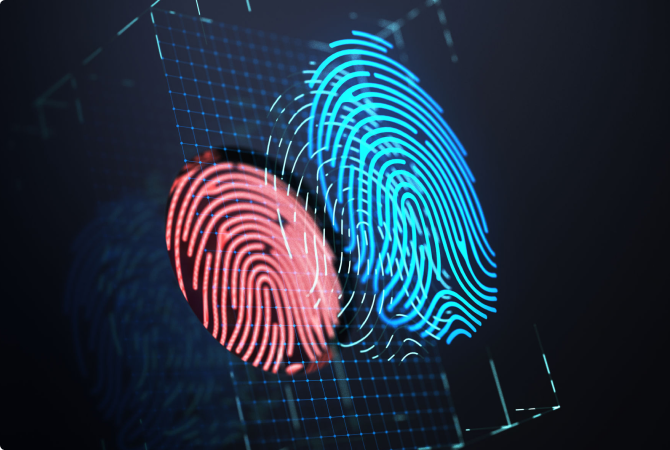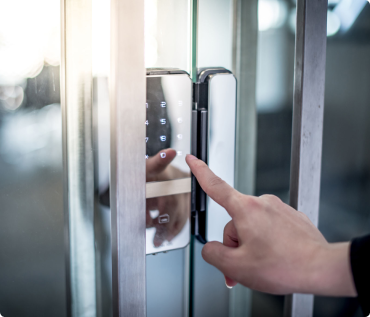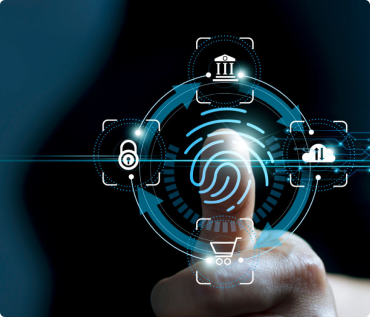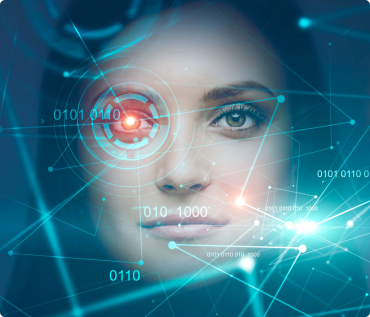- Introduction
- Working principle of Biometric Access System
- Requirement of a biometric access system
- Applications of Biometric Access Systems
- Selecting the best Biometric access systems
Introduction
While watching Will Smith use his voice access files in the movie I, Robot or Arnold Schwarzenegger with his fancy retina and face scans, have you ever wondered what goes on behind the technology? The systems used here are generally called biometric access systems. These access systems are very much used in many institutions requiring limited access like banks, military or corporate offices. A system where every movement needs to be recorded and perform other functions simultaneously without much chance of tampering with the database, biometric access systems have been one of the sophisticated processes that have evolved over the years.
When it comes to entry and exit, having access to approve and record at the same time is one of the primary jobs of the chosen access control security system. Manually maintaining this would sound tiring and prone to mishaps. Big businesses can’t compromise on this since there are many things like confidential information, valuables, personal data stored in computers and other storage devices.
Here is where biometric access control systems sweep in and save the day; let’s look into the details now.
Working principle of Biometric Access System
Before we understand the working of a biometric access system, we need to understand what biometrics means in the first place. Biometrics is a way of finding a person’s identity based on physical or behavioral traits and it finds itself useful in areas working with identities on a large scale.
The primary purpose of biometrics is to provide authentic protection to prevent unauthorized access, which can be easily tampered as is the case of passwords or pins. A biometric access system is an outline recognition unit that collects a particular type of biometric data like fingerprints, retina scans, or voice clips from a person and compares the previously saved data to allow access.
Now that we are clear what a biometric access system is, let’s look into this system's components.
A standard biometric access system consists of four units to work with, namely:
Sensor Device
Quality assessment unit
Feature comparing and matching unit
Database
Sensor Device
A sensor device in a biometric access system is generally used to capture the input used for verification in the device. To understand the work of the sensor device, let us consider the biometric systems of fingerprints, where sensors, i.e., optical sensors, in particular, produce the image of the ridge structure, and this image then is used as a base for further functions.
Data Quality Assessment Unit
Once the image is scanned or any form of input is collected, it must be evaluated first to check if it is fit to be compared with the saved data. Generally, an algorithm is used for tweaking the quality of the input else, the user is prompted to submit the input again. Then while processing, a set of particular features are selected which qualify the identity as in the case of fingerprint, biometric ridge patterns of a finger are taken as a measure for biometrics. The initial sample taken to assess and extract is set as a template, i.e., biometric template, which is further stored in the system database
Feature comparing and matching unit
Once the feature is collected, it is compared to the template stored and matched for identification. The number of features matched with the stored template is the deciding factor that confirms the user’s identity or denies the same.
Database
The database of a biometric access system stores all the relevant information that is required to process the given input. To enhance the level of security, specific information and biographic data is included in the biometric template. The type of access required, like for a single system, the user themselves can set security, or for establishing access for a new joiner to the firm, the manager might direct the authorized security to input the user’s credentials under supervision.
Now we know the working principle of biometric access systems, here’s why one needs it.
Requirement of a biometric access system
Maximum security
Biometric access systems provide ultimate security as they use biological features as a medium and are unique to every human being
Rules out duplication
With biographical features as a medium, every print or feature is unique, and it cancels out the possibility of tampering as each input is authenticated.
Convenience
Be it working with an easy-access system or the fact one doesn’t require to remember passwords or keep a card makes biometric systems an optimum choice. In addition to that, the biometric features are your ID, which makes sure maximum efficiency is observed, saving resources like expensive machinery, time and money.
Less Manual power required
With reliable machinery involved, this ensures less manual intervention, thus ensuring fewer mistakes and maximum efficiency in terms of records, protection, and time.
Saves money
A system that does not burn a hole in one’s pocket when it comes to installation or setting up, or compromising the existing systems in any way, or require any fancy machinery that would have you end up with a huge bill to clear, biometric access systems are sure an efficient way of minimal costs and extended benefits with negligible investments.
Now let’s look into the applications of a biometric access system.
Applications of Biometric Access Systems
Biometric Access systems generally can find themselves helpful wherever accurate recognition is required, ranging from the mobile in one’s palms to the access to a nuclear plant. Here are some popular applications listed below:
In Public sector:
In airports to scan passports, boarding passes, baggage claims, immigration.
To provide authentication for subways, train stations.
Access for restricted military areas, laboratories, nuclear plants, and more.
In educational institutions like schools and universities where authentication is required for the staff.
In hospitals to safeguard samples and drugs from unauthorized access.
In banks and lockers to make sure authorization is safe.
In Private sector:
In corporate workplaces to record the entry and exit of the employees and monitor clock-ins.
Private pharmacies to store samples and specific drugs.
Restaurants and pubs to avoid mishaps.
At-home security systems or anti-robbery systems.
In personnel devices like mobiles and at-home devices using artificial intelligence.
Now that we know where biometric access systems are used, choosing one fitting your needs and what are the best ones, given the market is filled with millions.
Selecting the best Biometric access systems
Smart I Electronics Systems Pvt Ltd
With multi-location, centralized attendance management, which raises the accuracy level and makes it the topmost choice for business working with multi-location stores or chains, Smart I's BIOslim and SmartSLIM are the best choice for biometric solutions where multiple functions can be handled at one go. One can download records with a central operated server thanks to the push data mechanism making it easier to audit and analyze the stored database.
Along with these features, Smart I's solutions have a great battery backup ranging from 2 to 3 hours in case of power failure. Smart I's biometric solutions also have the feature of auto-updates that saves time for manual updates. Smart I Electronics Systems's wide range of products is the best choice for a cost-effective, accurate system one can rely on for safe authorization.
With the existing pandemic, biometrics will be the topmost systems to be used, preferably the ones that do not require any touching. Technologies like artificial intelligence that perform many actions like recognizing faces, monitor facilities, and perimeters, solve most of the problems with minimal manual intervention. Biometric access systems are now complex as ever. Apart from artificial intelligence, another technology named ultra-wideband (UWB) has also been a hit working with a wireless short-range communication protocol that allows the device to behave like a walkie-talkie and that too with hands-free operation.
While choosing a system, one needs to make sure a few pointers. Security should be the topmost factor, along with machinery and interface that is up to date. Outdated systems might miss new features that might be useful. One wouldn’t want to compromise on security when dealing with a business with confidential information or valuable items. Having a good alarm system to alert when doors are open too long or that perform some actions on their own to rule out manual intervention is a need of the hour. With businesses that require you to step out regularly, a system needs to have an option to operate via mobile phones
Secondly, the installations need to be as minimal as they can be; the systems discussed above provide professional installations that can be edited and customized according to your business needs. Apart from these, security systems recommend conducting yearly reviews and check-ins to ensure hardware involved is working or not; was the system tampered with, or how many security incidents have occurred in the past year. The wiring involved should also be checked along with the control panel installed in a secured location.
Conclusion
While wrapping up about biometric access systems, there are many reasons why biometrics needs to be chosen. Conventionally, there are many options available for security, but biometrics make their way to the top. Where else can one get military- grade security power-packed with down to earth user interface and also are cost- efficient? Whatever the business is, biometric access systems sure would make the best choice for access systems providing top range services with pocket-friendly services.





